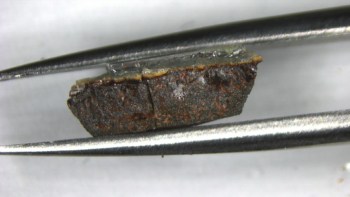
Anyone who has taken a condensed-matter physics course knows that superconductors can be classified neatly into type-1 or type-2 according to how they behave in an applied magnetic field. But now physicists in Belgium and Switzerland have found that at least one material — magnesium diboride — combines the characteristics of both types, leading the team to claim discovery of a complete new kind of superconductor called “type-1.5”.
Most conventional low-temperature superconductors are of the type-1 variety, which means that a magnetic field cannot usually penetrate the material. A magnetic field can, however, penetrate type-2 superconductors by creating tiny quantized vortices that grow in number as the field strength is increased. The field passes through a whisker of normal material at the centre of each vortex. The vortices repel each other, and as their numbers grow they form a vortex lattice.
This distinction is not quite so clear because under certain special conditions, field lines can penetrate type–1 materials. If the temperature of the material is changed rapidly (quenched) vortices will form but will attract each other and vanish upon collision. Also, when very thin samples of type-1 superconductors are exposed to a magnetic field, alternating stripes of superconducting and normal material can occur.
Behaving both ways
Now, Victor Moshchalkov and colleagues at the Catholic University of Leuven and the Swiss Federal Institute of Technology in Zürich are the first to show that the vortices in single-crystal samples of magnesium diboride (MgB2) behave in both ways. They have dubbed the material a type-1.5 superconductor because its vortices appear to repel each other over short distances and attract each other over longer distances (arXiv:0902.0997).
The result is a collection of vortices and non-superconducting regions that are organized into striped and gossamer patterns — depending upon the temperature of the sample and the strength of the magnetic field. Moshchalkov told physicsworld.com the patterns are similar to those seen in some liquid crystals and polymer films, in which the constituent molecules have similar attractive and repulsive interactions.
Moshchalkov believes that the type-1.5 behaviour can be understood by thinking of the material as containing two nearly independent superconducting fluids, which interact such that superconducting electrons can flow from one fluid to another.
Interacting mixture
Two-fluid systems with vortices of this type of interaction were predicted in 2005 by Egor Babaev of the University of Massachusetts in the US who describes it as comprising an “interacting mixture of two superconducting components which simultaneously shows properties of type-1 and type-2 superconductivity”.
Moshchalkov believes that there are more type-1.5 materials out there to be found, in addition to magnesium diboride, which was first found to be a superconductor in 2001. In particular, he believes that some of the iron-based superconductors discovered last year are prime candidates. He also believes that “artificial” type-1.5 materials can be made by placing a thin layer of type-1 material onto a thin layer of type-2 — something that the team is currently investigating.
Babaev looks forward to further research into type-1.5 materials because it could uncover many more vortex patterns that have never been seen before — with the possibility of phase transitions between patterns as magnetic-field strength is changed. In addition, he says that the work will be of interest to astrophysicists, who have suggested that type-1.5 behaviour might also occur a superconducting state of protons that is believed to exist in neutron stars.



